Degas at the Opera
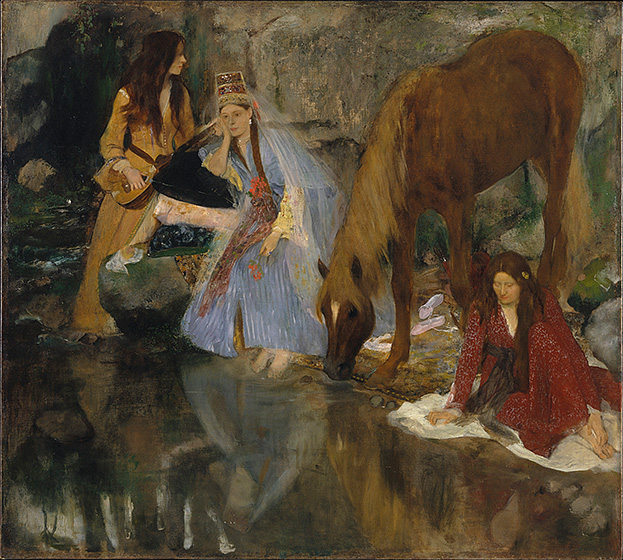
Edgar Degas, Portrait of Eugénie Fiocre a propos of the Ballet “La Source,” 1867–1868, oil on canvas, Brooklyn Museum, Gift of James H. Post, A. Augustus Healy, and John T. Underwood, 1921, 21.111. Photo: Brooklyn Museum
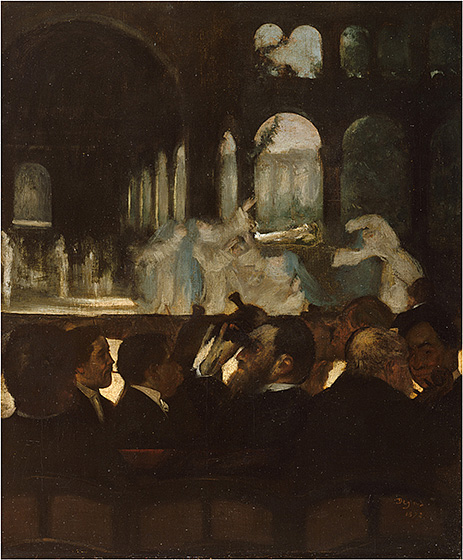
Edgar Degas, The Ballet from "Robert Le Diable," 1871–1872, oil on canvas, The Metropolitan Museum of Art, H. O. Havemeyer Collection, Bequest of Mrs. H. O. Havemeyer, 1929, 29.100.552. Image courtesy of The Metropolitan Museum of Art, New York
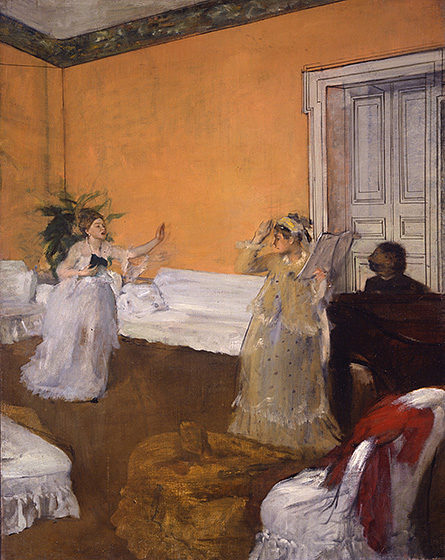
Edgar Degas, The Song Rehearsal, c. 1872, oil on canvas, Dumbarton Oaks, Washington, House Collection, Bequest of Mr. and Mrs. Robert Woods Bliss, 1940. Photo © Dumbarton Oaks, Washington
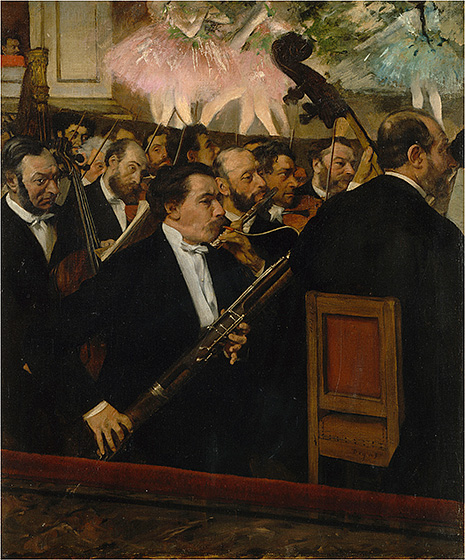
Edgar Degas, The Orchestra of the Opéra, 1870, oil on canvas, Musée d'Orsay, Paris. Photo © RMN-Grand Palais (Musée d'Orsay)/Hervé Lewandowski

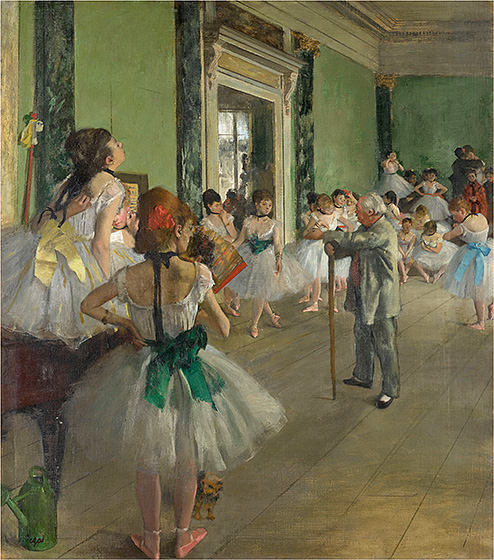
Edgar Degas, The Dance Class, begun 1873, completed 1875–1876, oil on canvas, Musée d'Orsay, Paris, Bequest of Isaac de Camondo, 1911. Photo © RMN-Grand Palais (Musée d'Orsay)/Hervé Lewandowski

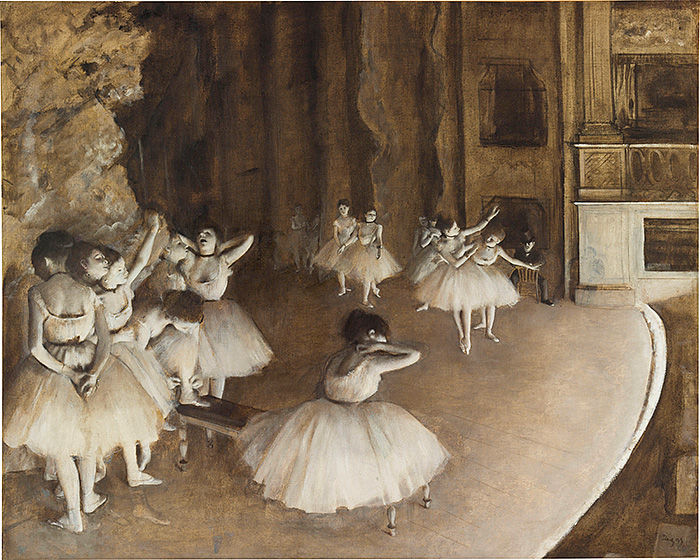
Edgar Degas, The Ballet Rehearsal on Stage, 1874, oil on canvas, Musée d'Orsay, Paris, Bequest of Isaac de Camondo, 1911. Photo © Musée d'Orsay), Dist. RMN-Grand Palais/Patrice Schmidt
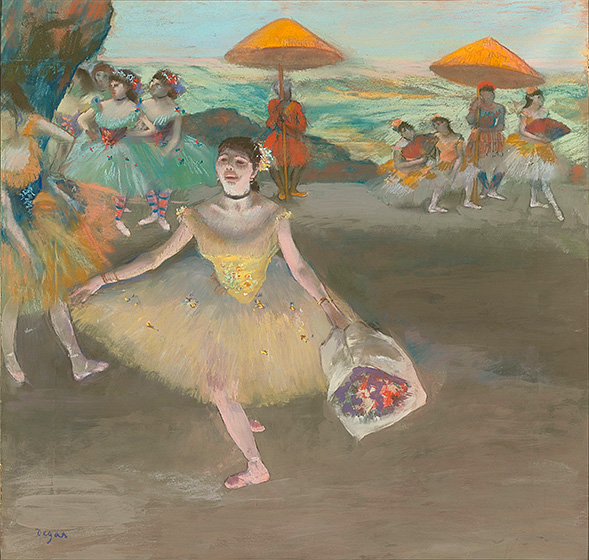
Edgar Degas, Dancer with a Bouquet Curtseying on Stage, 1878, pastel on wove paper mounted on canvas, Musée d'Orsay, Paris, Bequest of Isaac de Camondo, 1911. Photo © RMN-Grand Palais (Musée d'Orsay)/Hervé Lewandowski

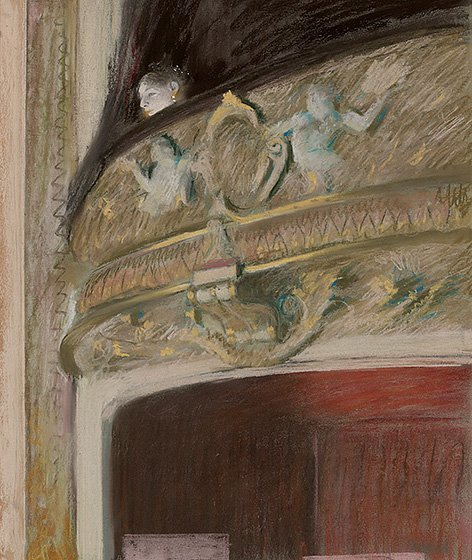
Edgar Degas, Study of a Theater Box, 1880, pastel and oil on board laid down on canvas, The Museum of Fine Arts, Houston, The Lewis Collection, 377-2014. Photo © The Museum of Fine Arts, Houston; Albert Sanchez, photographer

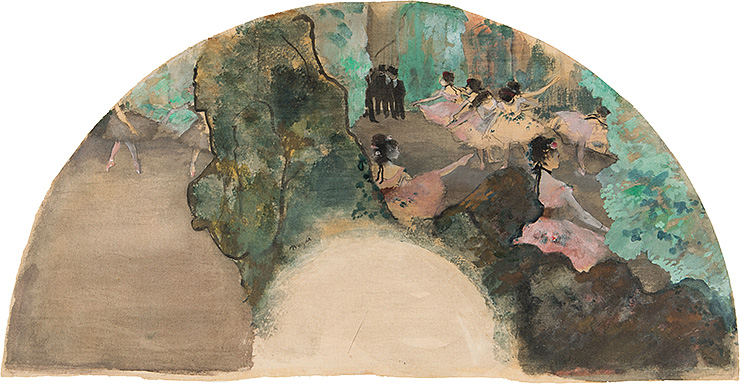
Edgar Degas, Dancers, 1879, gouache, oil pastel, and oil paint on silk, Tacoma Art Museum, Gift of Mr. and Mrs. W. Hilding Lindberg, 1983.1.8. Photo: Duncan Price
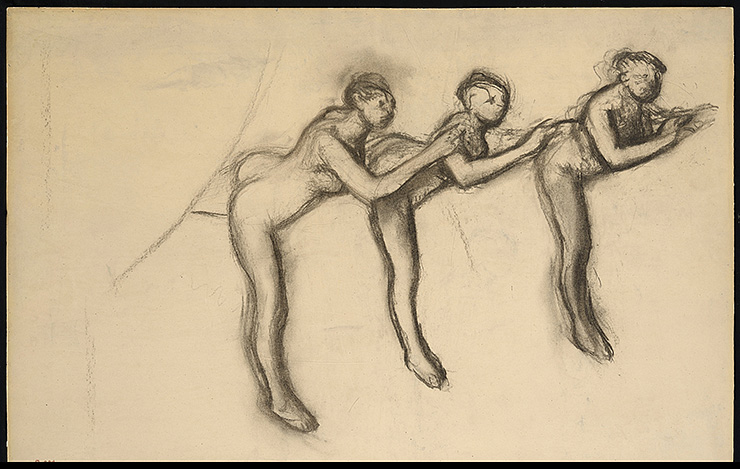
Edgar Degas, Three Nude Dancers Executing Arabesques, c. 1892–1895, charcoal on paper mounted on board, Bueil & Ract‑Madoux Collection, Paris. Photo: Jean-Louis Losi, Paris
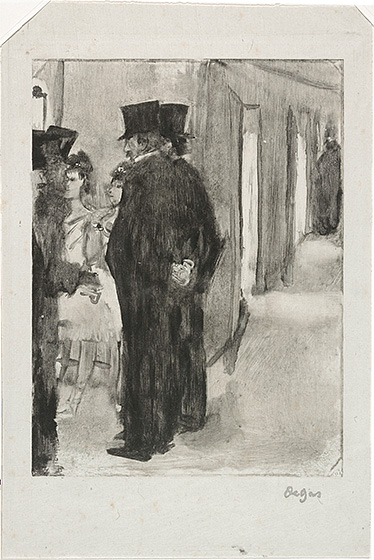
Edgar Degas, Pauline and Virginie Conversing with Admirers, c. 1876–1877, monotype (black ink) on India paper, Harvard Art Museums/Fogg Museum, Cambridge, Massachusetts, Bequest of Meta and Paul J. Sachs, 1965. Photo: © President and Fellows of Harvard College

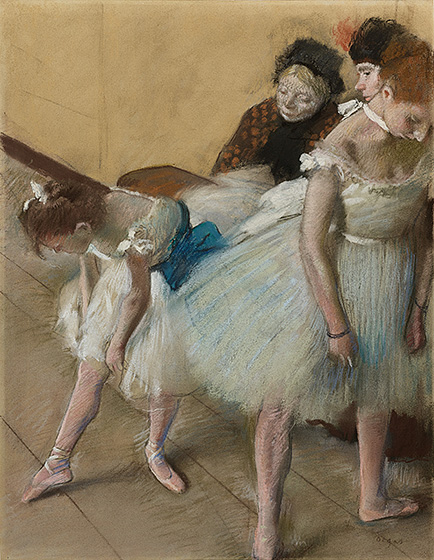
Edgar Degas, Dance Examination, 1880, pastel on paper, Lent by the Denver Art Museum, 1941.6. Photo: akg-images